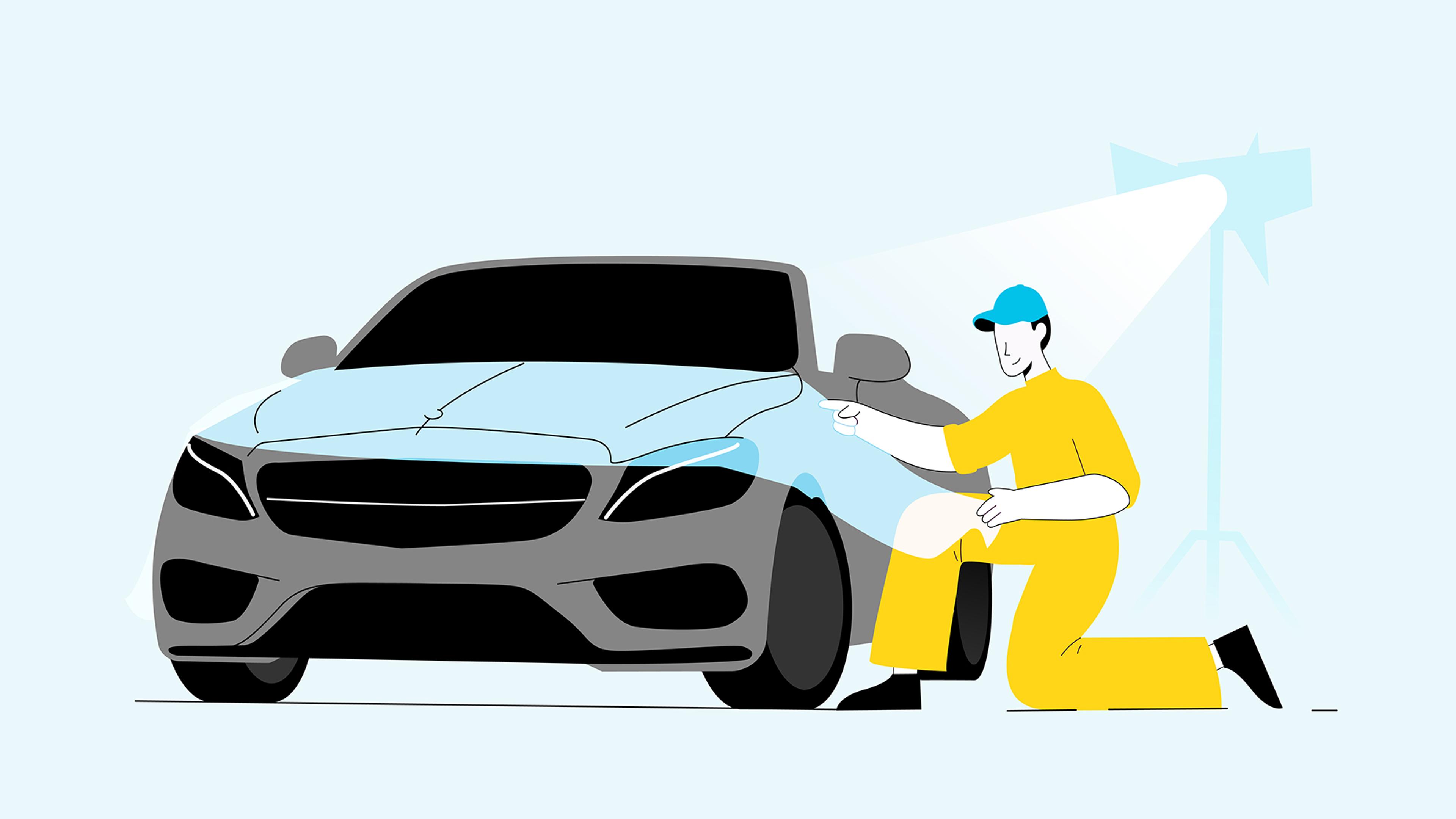
Even when regularly washing and cherishing your car, its precious paint won’t last forever. In the past, a full repaint was the only solution to this problem, but modern technology brought cheaper and simpler alternatives, such as car paint protection film (PPF).
Most car manufacturers already offer PPF as an optional feature because it’s durable, efficient, and extends the lifespan of a painted surface. However, PPFs aren’t always worth it because of their high price and several disadvantages.
Here’s everything you need to know about car paint protection film.

Used cars have dark secrets
Reveal them all! Just enter a VIN code and click the button:
What is paint protection film?
Paint protection film (PPF) is a protective thermoplastic material that shields painted and other car surfaces from rock chips, scratches, bug splatter, and UV rays. Also known as clear paint film, clear bra, or invisible shield, PPF is usually applied on painted body panels and clear plastics, such as headlights and taillights.
This technology was first used in the military to protect helicopter blades and the front ends of jets from premature wear. It’s typically made from a flexible and strong material called polyurethane, but modern film consists of multiple layers and often has an exclusive “self-healing” feature that ensures full recovery from minor damages.
Types of paint protection film
While paint protection film uses polyurethane as the base material, the remaining layers vary, providing different characteristics.
Here are the most common PPF types:
- Gloss PPF preserves the looks of the original paint. Therefore, it's usually offered as an optional bonus when buying a new car.
- Satin PPF has a matte texture and is commonly used on cars with matte paint. Some install it on glossy paint to get a matte look.
- Temporary PPF is much cheaper and easier to apply, which makes it great for road trips and other temporary uses.
- Off-Road PPF – has a thicker clear coat that helps to withstand deeper scratches and stronger impacts.
Many still think that PPF is the clear version of vinyl wrap, but the vinyl wrap is much thinner and its main purpose is customization. Moreover, the application of PPF and vinyl wrap is different: while PPF requires wet installation, vinyl wrap must be literally wrapped around each panel and it doesn't adhere to wet surfaces at all.
PPF maintenance

Modern paint protection film doesn’t require special maintenance as it's self-healing. However, you should take some precautions to make it last longer:
- Remove bug splatter and bird droppings to avoid damaging the film.
- Wash your car using a microfiber cloth.
- Only use PH-neutral materials when cleaning your protective film.
- Don’t wash or clean the film when it’s hot.
- Don’t use polishing equipment on PPF.
Your PPF will require special care if it’s been applied recently.
Since paint protection film uses wet installation, the moisture remains trapped between the painted surface and the film for at least 7 days, depending on the weather. You shouldn’t touch the film for at least 2 days or wash it for at least a week after installation. Ideally, you shouldn’t drive your car for 7 days to let the film cure.
Certified vs. uncertified PPF installers
Many auto shops offer PPF installation, even if they aren’t certified to do so.
Uncertified installers usually attract clients with lower prices but may use low-quality or dated films and may only know the basics of installation. Poor PPF protection results in premature yellowing, peeling, and cracking, so it can often be a waste of money.
Many automotive paint protection film manufacturers offer professional PPF installation training courses, teaching how to choose quality film, install it, and avoid common mistakes. A certified PPF installation will ensure the best value for your money.
Advantages of paint protection film
Paint protection film has improved significantly over the years, therefore, it’s one of the most efficient paint protection methods.
Despite being cheap, it has several other advantages:
- Self-healing properties
- Custom colors
- UV protection
- Protection from dirt, bugs, and bird droppings
- Partial protection possibility
Self-healing properties
Perhaps the best thing about modern PPF is its self-healing feature. The polyurethane layer softens and releases tension when heated, melting various scratches and swirls. The surface evens out when exposed to a heat gun or sunlight during summer.
Strong impacts and deep scratches can damage the film to the point where self-healing doesn’t help, but this is very unlikely during everyday use – the film should remain in great condition for years.
Custom colors
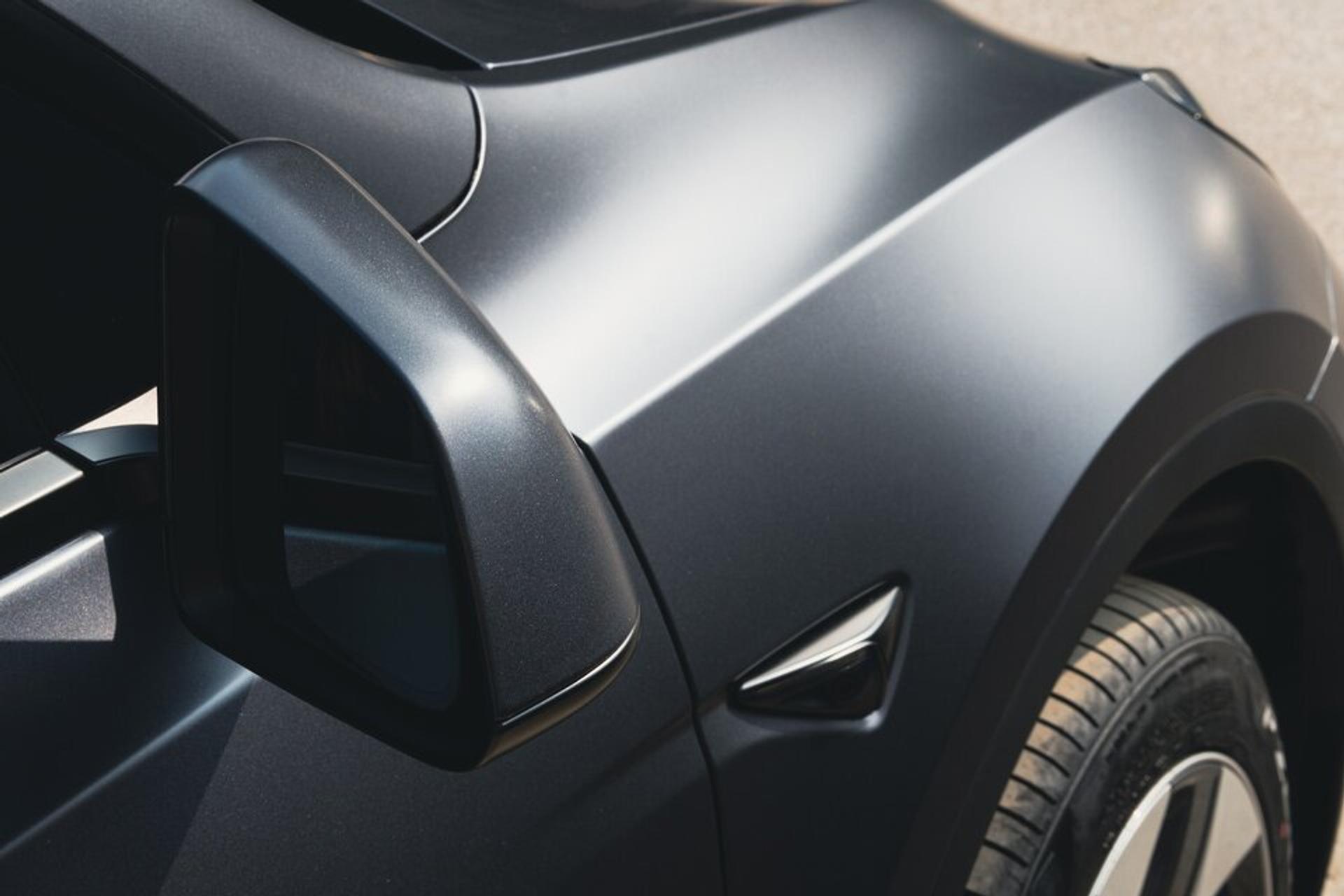
Colored PPF is a relatively new and durable alternative to ordinary vinyl wrap. While it’s more expensive and harder to install than vinyl wrap, you’ll be sure it won’t get damaged while washing your car or driving on a dirt road. Color is just an additional bottom layer, meaning colored PPF is as durable as transparent versions.
UV protection
Direct sunlight is a natural enemy of your car’s paint, plastics, tires, and even the interior. PPF minimizes UV damage and preserves the richness and glossiness of paint for many years.
With that said, you should still park your car in the shade whenever possible to reduce the effects of UV exposure on the paint. Daily ultraviolet light gradually separates molecules in your car’s paint, which results in fading and cracking – this process is known as photodegradation.
Protection from harmful dirt, bug splatter, and bird droppings
Road grime and various splatter on your car usually contain acids and other chemicals that destroy your clear coat and paint. PPF ensures these materials won’t reach your paint, but harsh chemicals eventually can damage the film, too, so you should wipe bug splatter and bird droppings off as soon as possible.
Partial protection possibility
The front end of your car catches most of the bugs and rocks as you drive. If you want to install PPF to avoid rock chips and scratches, you can choose partial protection, covering only the front of your car. This is known as a “clear bra."
One option is to fully cover the front half, including the mirrors, while another way is known as the partial front, covering only the front bumper and part of the hood with the fenders.
These options are 3-4 times cheaper than full vehicle protection, but the difference in gloss may be visible between the protected and unprotected panels.
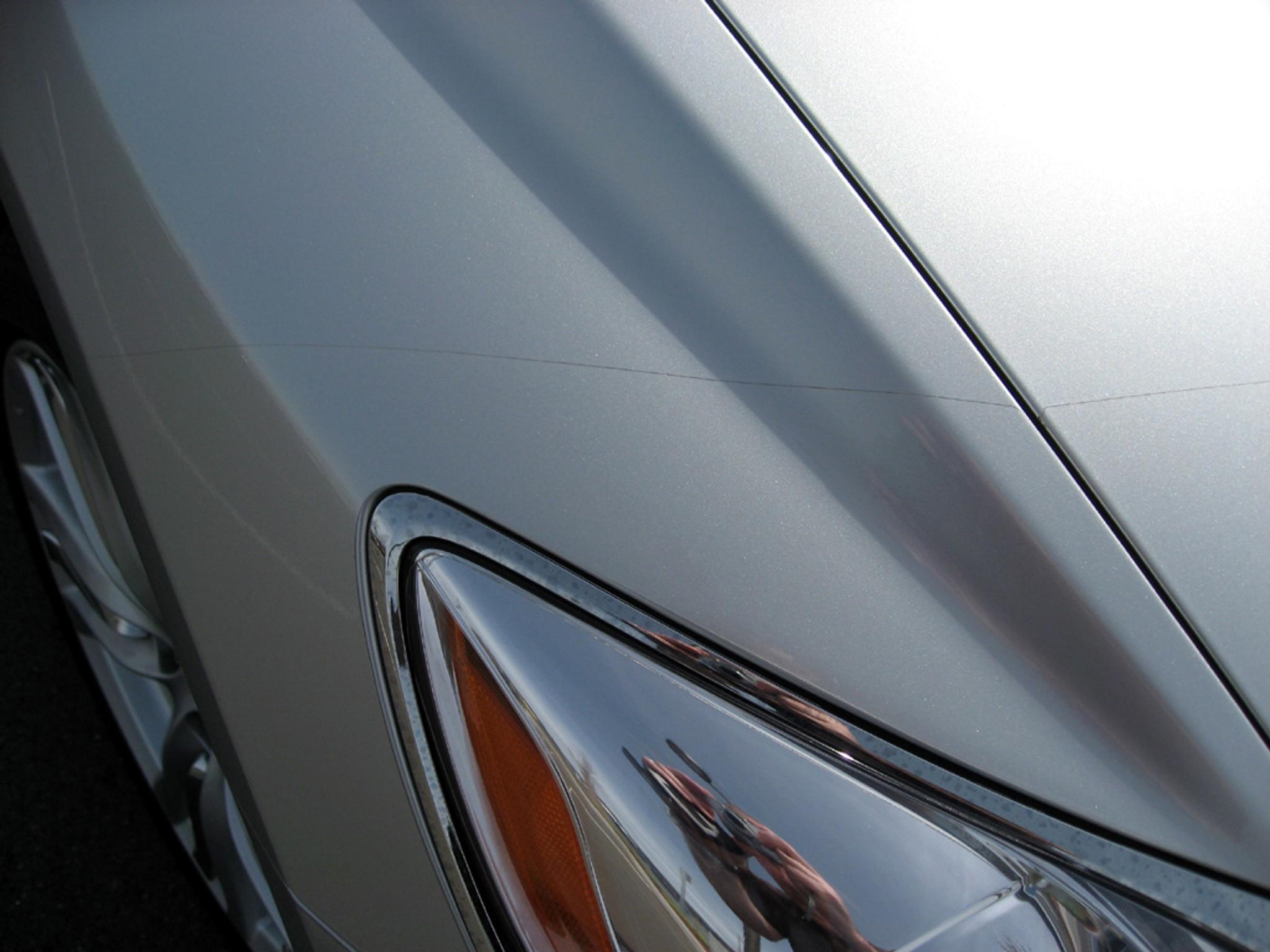
Generally, you should care for PPF the same way you would for the car’s factory paint.
For instance, you should still wash your car regularly to protect the film from various chemicals. The main difference is that a
Disadvantages of paint protection film
Many car owners still choose regular waxing, ceramic coating, or no protection at all instead of PPF for a few reasons.
Some of the key disadvantages that can help you decide whether your car needs PPF are:
- High cost
- Complicated application
- Yellowing
Cost of PPF
Protecting your car with PPF is cheaper than repainting but more expensive than most other auto paint protection methods.
The cost of PPF can vary from $2,000 to $7,000 for a whole car and up to $2,000 to only cover the front end. The size of a car and the quality of the film have a huge impact on how much paint protection film costs, but it’s still among the premium protection options on the market.
Difficult paint protection film installation process
The main reason behind the high price of PPF is the complicated installation process.
Unlike vinyl wrap, PPF cannot be heated and stretched to fit specific panels and parts. Each piece of PPF has to be cut almost perfectly and applied using soapy water, removing all the bubbles using a squeegee and carefully working around problematic areas afterwards.

Permanent bubbles, lift lines, dust contamination, and over-stretching are common issues even among those who know how to apply paint protection film.
Moreover, door handles, side mirrors, roof racks, spoilers, and other body parts should be removed to cover them properly. Professionals can take up to 7 days to install paint protection film.
Yellowing
Paint protection film turns yellow as it ages, which is especially noticeable on white and silver vehicles. Yellowing is more noticeable on partially protected cars, but with time, discoloration may also appear on fully covered vehicles.
The film itself doesn’t turn yellow – the problem is in the adhesive.
The adhesive gradually oxidizes and loses color when exposed to UV rays, leaving no other option than to replace the film. Fortunately, PPF manufacturers are already using a more durable adhesive, extending the lifespan of PPF.
Bear in mind that adhesive used in older PPF types is cheaper, therefore, some manufacturers still use it. Choose only respected and certified manufacturers to enjoy the best results.
How long does paint protection film last?
No other vehicle paint protection technology can compete with PPF when it comes to longevity. Quality PPF can last 10 years or more if you wash it regularly and don’t park it in the sun too often.
The quality of the film and its installation also have a big impact on longevity. For instance, PPFs in the early 2010s were overpriced and fragile, therefore, drivers mostly chose full bumper and partial hood protection. The discoloration was a typical problem, and the edges often peeled off.
Nowadays, many manufacturers assure their products are extra durable and yellowing-proof, so check how long paint protection film lasts in real conditions before picking the best option for you.
Removing paint protection film
PPF removal is much easier than installation. However, if the paint is in poor condition, it can come off together with the film, so a few precautions are essential.
The glue and the film itself become stiff over the years, so you should soften them before peeling off. A heat gun works great in this case, but you can also place a towel and pour hot water on it instead.
Before taking your car to a body shop for PPF replacement, you can save some money if you know how to remove paint protection film. The removal may take up to a full day and become pricey when left to professionals.
Alternative ways to keep your car paint protected
In many cases, PPF isn’t the optimal choice because the paint has to be in top condition before application. It’s too expensive for old cars and unnecessary if you’re going to sell your car in the near future.
In that case, you can count on a few cheaper and quicker alternatives that can work nearly as well as PPF:
- Proper care
- Waxing
- Ceramic coating
Take care of your car
A few basic car care habits can extend the life of your paint job significantly. For instance, wash your car not only for aesthetics but also to remove road debris. These include unburnt fuel, grease, brake dust, iron, and other paint-damaging chemicals. Avoid automatic car washes – no matter how soft and natural their brushes are, they trap dirt and scratch your paint.
Your daily parking spot is also very important if you want to preserve your car’s paint. You’ve probably heard about forgotten classic cars kept in dark barns for decades. Usually, these examples remain in great condition because they haven’t been exposed to direct sunlight, acid rains, and road debris.
Everything in your vehicle will last longer if you keep it away from the elements as consistently as possible.
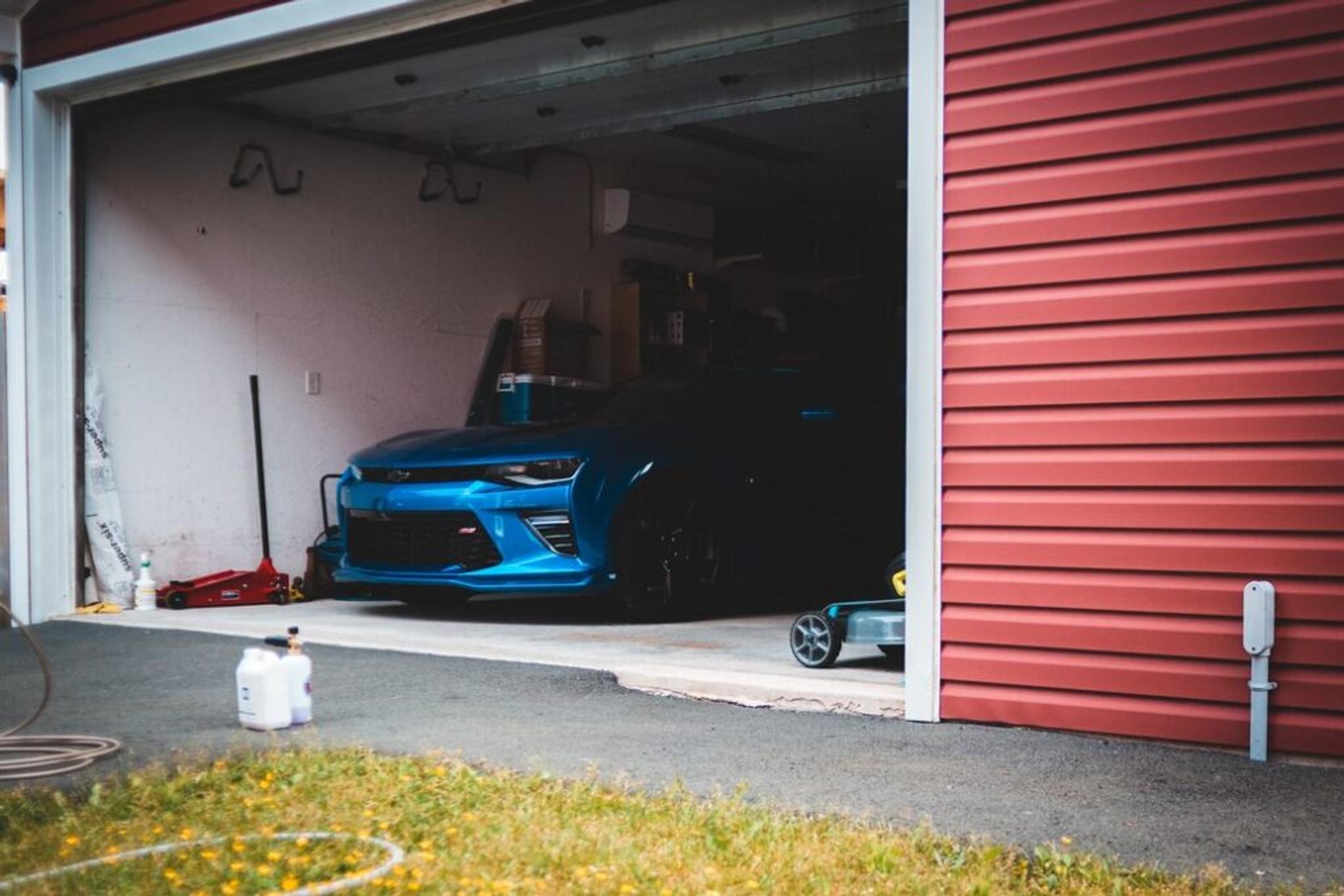
You may notice tiny rock chips and rust spots eventually. Unfortunately, most people don’t worry about them until small imperfections become severe problems. You can easily repair these small damages by applying small spots of paint or a clear coat. However, a small rock chip can become a severe rust spot in about a year, so it's important to know how to prevent rust in the first place.
Car waxing
The cheapest automotive paint protection is car waxing. All you need to do is apply wax and spread it by buffing. Wax creates a thick protective coating and increases the tension of the surface, preventing water and dirt from sticking. Most auto part stores sell various car waxing products, and you can easily do the job yourself.
Car waxing in a body shop costs around $50 to $150, and professionals can complete the task in less than an hour.
However, wax is soft, meaning it’s easy to damage and can even melt away during hot summer days. You must wax your car every 6-8 weeks to maintain optimal protection.
Ceramic coating
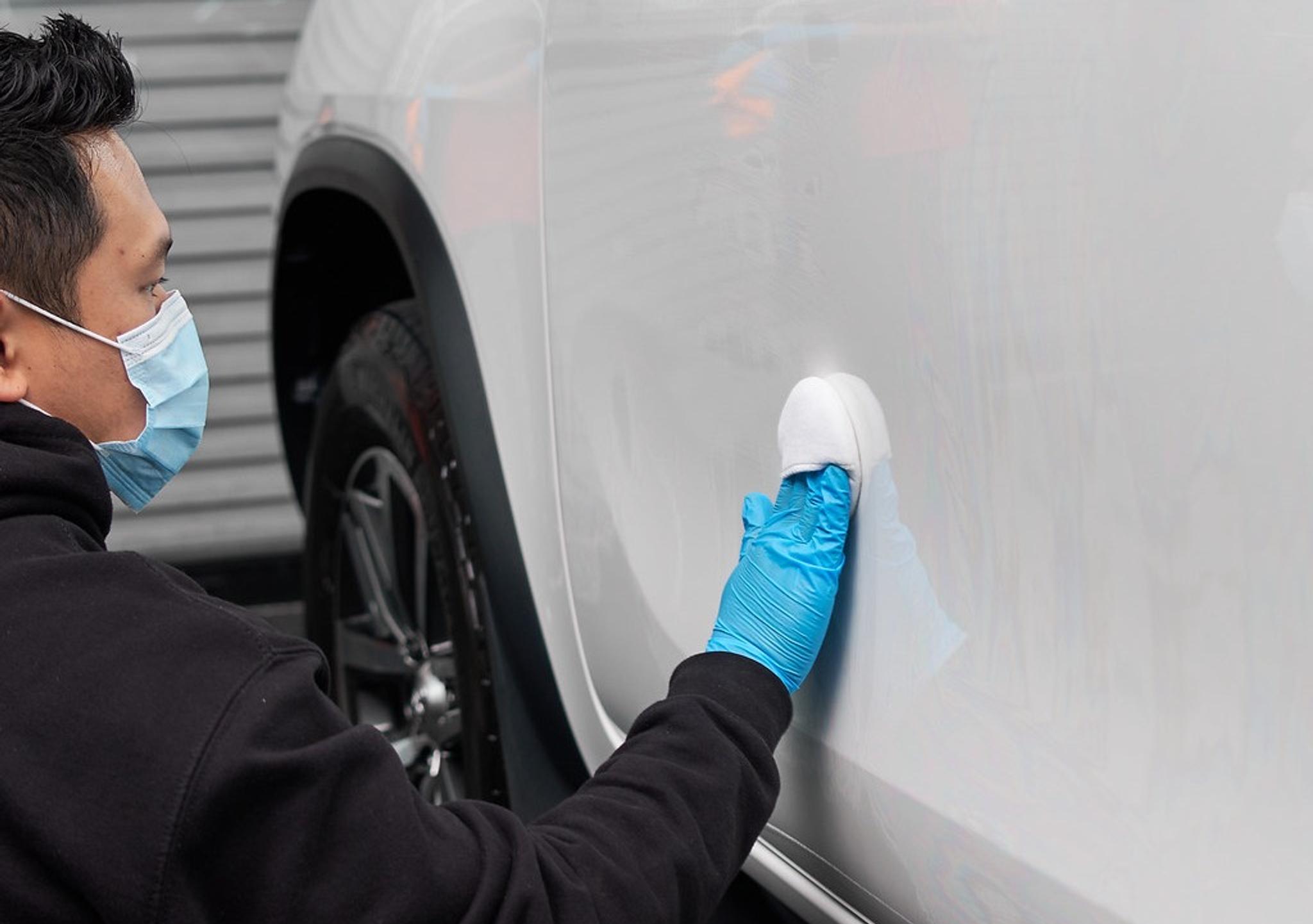
Ceramic coating is a much more durable alternative to waxing because it contains silicon dioxide, which becomes a hard glass-like material after application.
A car must be detailed before applying ceramic coating because it can fail if contaminants are left underneath. The ceramic coating doesn’t protect from deep scratches but provides a strong gloss effect and is more resistant to swirl marks and chemicals than the original clear coat.
Professional ceramic coating can cost over $1,000. It seems a lot compared to waxing, but this technology lasts for several years when applied and maintained properly. Be aware that applying a ceramic coat is difficult as small mistakes can reduce its lifespan to several months.
Whether paint protection film or ceramic coating is better depends on your car and needs. Ceramic coating is cheaper and easier to apply, while PPF provides more protection, but its cost may be steep for many used vehicles.
If you haven't used any paint protection yet, wax may be the best way to start without spending a fortune.
Not just aesthetics – maintain your car’s condition and resale value
One of the main reasons to apply paint protection film on a car is to preserve its value. Prices of the same car model can vary wildly depending on its condition. As a result, when you decide to sell the car, PPF and a spotless paint job underneath it will definitely give you an upper hand in negotiations.
However, if you care about your car’s condition and resale value, you should also take care of its technical side.
Regular car maintenance, such as oil and filter changes, wheel alignment, and using proper fluids, are essential when keeping a car in top condition. Also, car accidents, mileage rollbacks, and various legal issues can affect the car’s value drastically, therefore, it’s recommended to check the vehicle’s history before buying one.
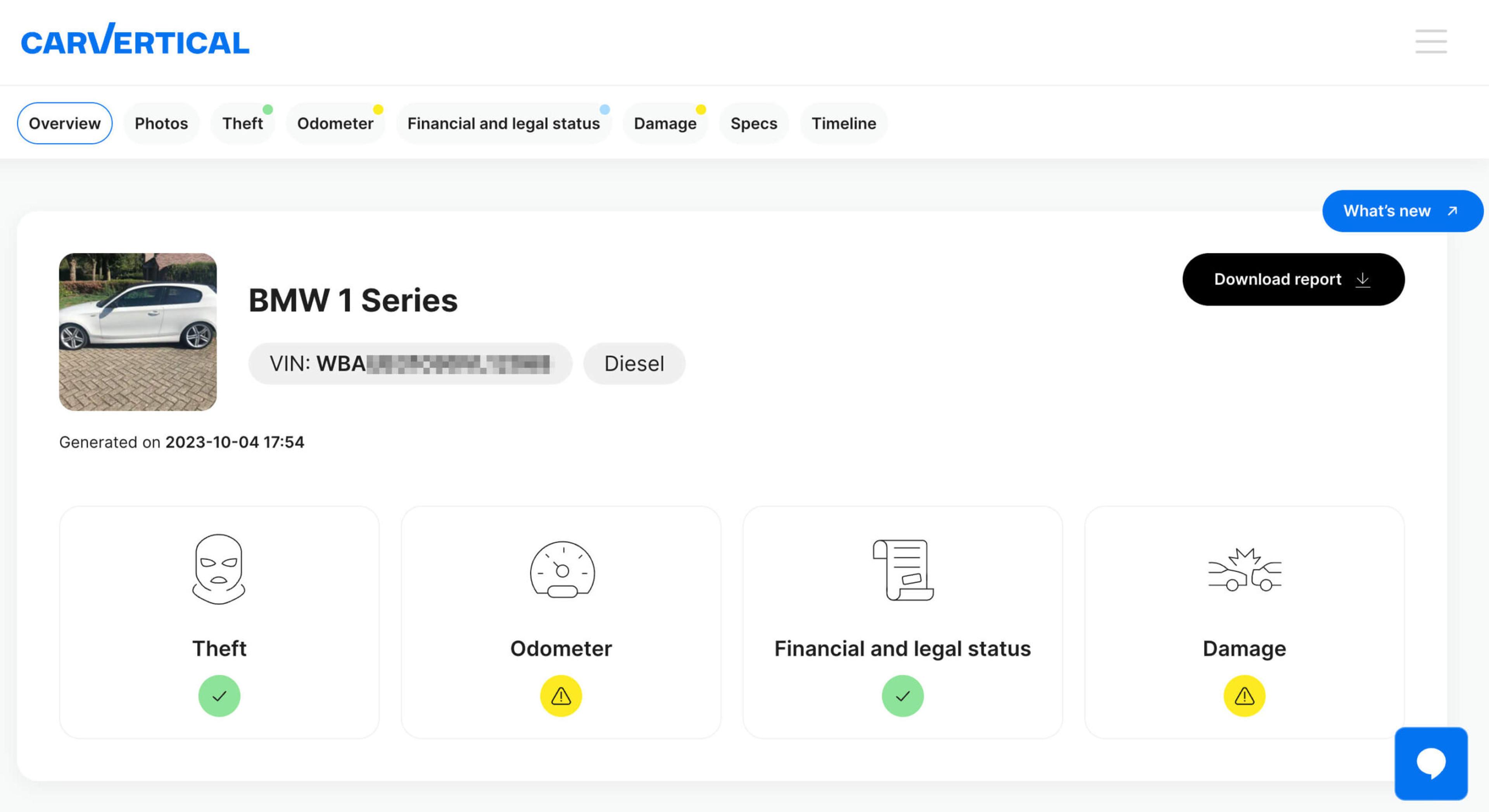
Vehicle history reports use data from vehicle inspection centers, governmental registries, dealerships, and other reliable sources to provide you with valuable information about the car’s past. Facts about car accidents, thefts, and ownership changes can become a turning point when looking for a used car.
So, choose wisely, drive safely, and take care of your car.

Check your VIN
Avoid costly problems by checking a vehicle's history. Get a report instantly!
Frequently asked questions

Article by
Evaldas Zabitis
Evaldas has been writing since middle school and has had a passion for cars for as long as he can remember. Right after getting his driver’s license, he spent all of his savings on shoddy cars so he could spend time fixing, driving, and selling them. Evaldas is always interested in automotive technical innovations and is an active participant in automotive community discussions.
